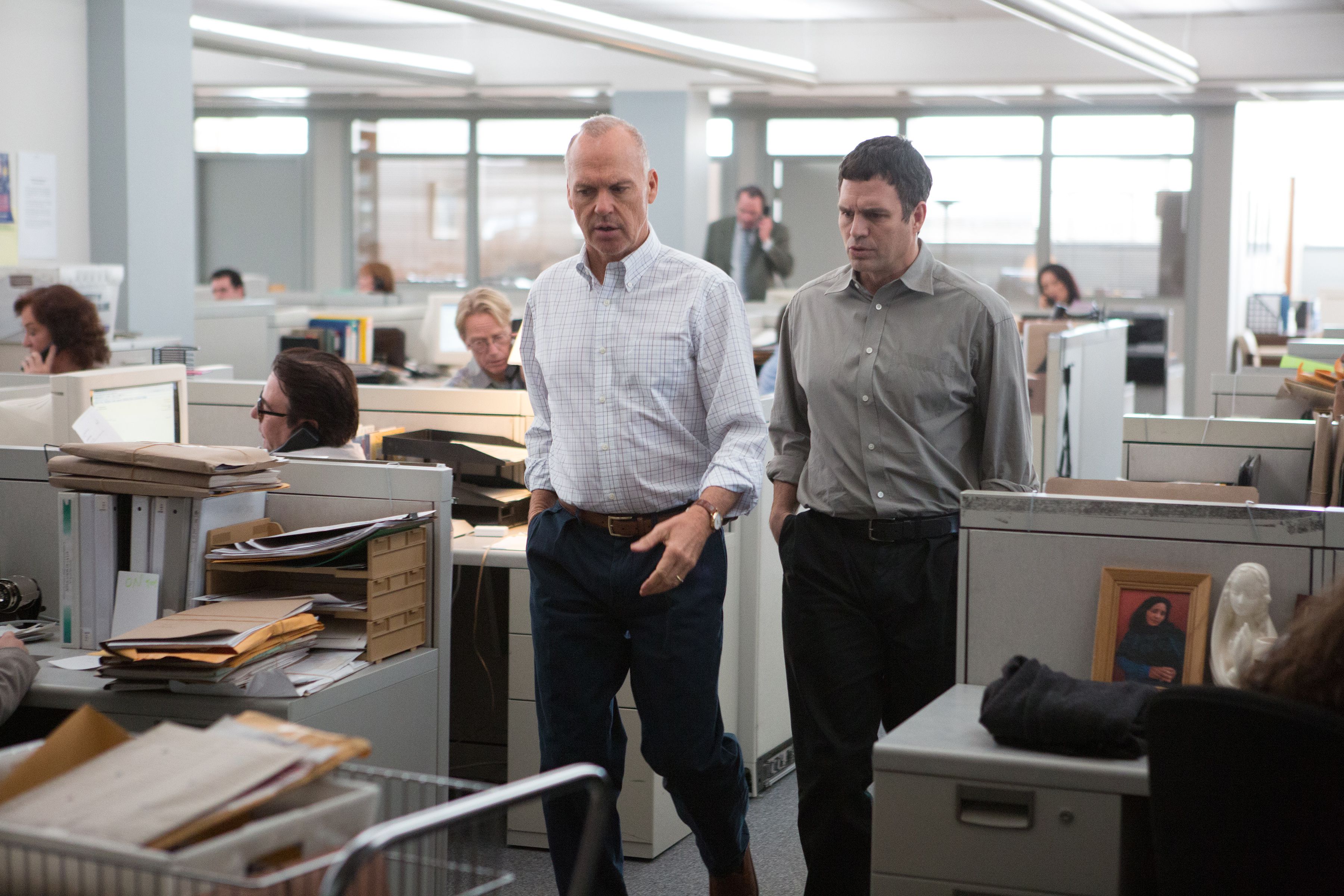Is ‘Spotlight’ a love letter to a fading form of journalism?
There is a scene in Spotlight (2015) wherein a team of investigative reporters run through several hundred pages of data with a ruler and pen, hoping to uncover the information they need to break their story. This depiction, familiar yet already seeming antiquated, captures in a nutshell the film’s respect and nostalgia for journalistic practices that have begun to fall by the wayside.
Spolight, Academy Award winner for both Best Picture and Best Original Screenplay, chronicles The Boston Globe’s “Spotlight” team in 2001 as they revealed a widespread, decades-long cover-up by the Boston Catholic Church of priests sexually abusing children. The series of stories won the real Spotlight team and The Boston Globe the 2003 Pulitzer Prize for Public Service.
Featuring Mark Ruffalo, Michael Keaton, Rachel McAdams, Stanley Tucci and Liev Schreiber (among others) playing the parts of the real-life people involved, the movie is a testament to the vital role of good journalism — particularly the kind that operates without fear or favor. Reviews have been overwhelmingly positive, with many critics comparing it to that gold standard of journalism movies, All The President’s Men (1976).
Watching Spotlight today, one wonders how such an investigative story would be handled in the current media environment. One of the most striking things about the real-life Spotlight team’s investigation is just how much time they gave the story to develop. Months were devoted to ensuring not only that they possessed all the facts and had tracked down as many sources as they could but also that they put out a story that mattered and would trigger a tangible change in the system. And once the initial story was out, extensive time and resources were devoted to follow-ups, ensuring the full scale of the abuse came to light and initiated actual efforts from the Catholic Church to address the issue.

Michael Keaton and Mark Ruffalo in Spotlight (2015)
It is rather difficult to imagine many media organizations today willing to devote three or four journalists to a months-long investigative story — while there are still a few who would, the truth is that, for most newspapers, dedicated investigative journalism teams are becoming a luxury.
Meanwhile, the speed at which stories are expected to appear online leaves little room for the type of thoughtful, in-depth journalism depicted in Spotlight, the kind of stories made up of painstaking details and shaped by time. That is not to say excellent work isn’t being done with online journalism — however, the ability to break a still-developing story and to continue updating it does change the way these stories are told.
Even the details of the way the reporters do their jobs as depicted in Spotlight makes the investigation feel like it belongs to a bygone era. With Google still in its infancy and mobile phones just beginning to make an appearance, journalism in the early 2000’s meant pounding pavements, knocking on doors and waiting outside offices hoping to catch a valuable source — all of which the journalists in Spotlight do. Much of the story is uncovered through the relationships journalists build with key figures in the investigation, relationships that require effort, time and a physical presence to cultivate.

Rachel McAdams in Spotlight (2015)
Today, although some continue to cultivate this style of journalism, most are more likely to send emails and make calls on mobile phones. Face-to-face meetings do happen but nowhere near as frequently and only if deemed essential. But as Spotlight shows, there is a spontaneity and immediacy to meeting someone in person that can often take a story in unexpected directions, something that is less likely to occur over email or a phone call.
Nostalgia, of course, has a way of painting the past in pleasant hues. Few of us could honestly say we’d give up our data analysis tools and Internet searches in favor of trawling through reams of figures or spending hours in the library.
What Spotlight makes clear, however, is the vital importance of keeping in mind journalism’s ultimate aim. The tools we use should serve how we try to achieve that ideal, instead of changing that ideal itself.

